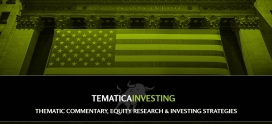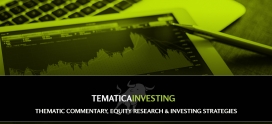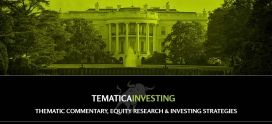Economics & Expectations September 2015
We recently closed the books on the month of August, and in short, it was one of the worst August months we have seen in some time. In our view, yet to emerge forecasted earnings revisions and second half economic expectations as well as the Fed’s upcoming FOMC meeting on September 16-17 will keep the market range bound in the short-term.
Recapping the last few weeks.
Looking back since the last edition of Tematica Insights, we’ve received quite a heaping of discouraging data, and the market has reacted accordingly. After the sharp rebound in the market on August 26th and 27th following yet another interest rate cut by China and dovish comments from several Fed officials about the timing of interest rate hikes, the market closed out the last full week of August in the green, with the S&P 500 leaping up 120 points. Still way off the soaring heights we saw back in May, but a nice little rebound from the 1,868 price level we witnessed in the S&P 500 on August 25th, wiping out nearly two years of gains.
But as quick as even this modest glimmer of hope came, renewed concerns over China and Fed interest rate hike timing saw the market finish the month with a whimper as market levels moved downward the last couple of trading days in August. All told, we exited August with all three major US stock market indices — the S&P 500 (our preferred yardstick), the Dow Jones Industrial Average and the Nasdaq Composite Index — all in the red on a year-to-date basis.
 As we’ve cautioned, the rash of recent stimulative measures by the Chinese central bankers would have little impact in the short-term, which is exactly what was realized with a first look at the dismal China PMI reading for August (see chart).
As we’ve cautioned, the rash of recent stimulative measures by the Chinese central bankers would have little impact in the short-term, which is exactly what was realized with a first look at the dismal China PMI reading for August (see chart).
Per the report:
Chinese manufacturers saw the quickest deterioration in operating conditions for over six years in August, according to latest business survey data. Total new orders and new export business both declined at sharper rates than in July, and contributed to the most marked contraction of output since November 2011.
Mark our words: this unexpectedly worse situation is going to ripple through economic and earnings expectations.

 Compounding all of this, new orders as well as new export orders continued to fall in the US according to the August PMI data from Markit Economics (see chart). This provides more confirmation for what we’ve been seeing in recent weeks in data points such as the declining year-over-year weekly railcar loadings (see Weekly Rail Traffic Data chart) and weak regional Fed reports. Those domestic findings were echoed by a weaker than expected August ISM manufacturing report, which showed declines almost across the board, including greater drops in new orders.
Compounding all of this, new orders as well as new export orders continued to fall in the US according to the August PMI data from Markit Economics (see chart). This provides more confirmation for what we’ve been seeing in recent weeks in data points such as the declining year-over-year weekly railcar loadings (see Weekly Rail Traffic Data chart) and weak regional Fed reports. Those domestic findings were echoed by a weaker than expected August ISM manufacturing report, which showed declines almost across the board, including greater drops in new orders.
Despite what the talking heads in Washington would say, there is little doubt the US economy is slowing.
As if the rash of PMI data wasn’t enough to make one raise an eyebrow about the near-term velocity of the economy, comments from the recent September Beige Book (a qualitative assessment of the U.S. economy compiling findings from each of the 12 Federal Reserve districts) point to concerns over upcoming minimum wage hike increases, as well as higher costs associated with the Affordable Care Act. Eleven of 12 Fed districts reported only “moderate” to “modest growth”, with the Cleveland district reporting only “slight growth”. This compares with 10 districts that reported “moderate” to “modest” growth in the July Beige Book. Most districts described labor demand as “no more than modest” to “moderate”, while most describe actual job growth as “no better than slight” or “modest”.
Soon after the release of Beige Book, we received the August Employment Report with its 5.1 percent unemployment rate, and that hit the market like too much lighter fluid on a blazing charcoal barbeque. This headline employment figure — the last such report the Fed will view before the FOMC meeting — turned up the flames of uncertainty about what will happen with rates. When we parsed the data, however, we once again see Wall Street over-reacting, much the way it did at the end of August.
To us it’s pretty simple. When we look at more people leaving the work force than the number of jobs being added, it becomes pretty obvious that the drop in the Unemployment Rate was due to “bad math.”
Here’s what we mean: when looking at other indicators — Gallup, and parts of the PMI and ISM data — it all helps to paint a much truer picture of the employment situation, as does payroll-to-population and labor force participation rate data of the jobs market. While politicians in Washington, DC will point to the falling Unemployment Rate as being due to “progress”, the reality couldn’t be further from the truth. Currently, labor force participation, which includes working-age Americans that are actually working or actively looking for work, stands at 62.6 percent — the lowest it’s been since 1977. That doesn’t speak to a healthy employment situation.
Despite all the would-be euphoria over the stronger-than-forecasted upward revision to 2Q 2015 gross domestic product (GDP), the data of late points to a greater fall should the Atlanta Fed’s GDPNow forecast as of September 3rd of 1.5 percent for the current quarter proves to be correct.
The one bright spot in the all data we’ve consumed over the last few weeks? The Eurozone.
We continue to see Eurozone expansion on the back of improving conditions in Germany, Italy, Spain and other countries. Tempering our enthusiasm, however, we need to be mindful that a contracting China is apt to weigh on the activity in the Eurozone. We’re only now starting to hear about the “China Ripple” — and no, it’s not the latest flavor from Ben & Jerry’s — but the ripple effect from the accelerating China slowdown. Australia’s growth came in at half of expectations, and now German factory orders dropped a larger than expected 1.4 percent in July compared to the previous month, dragged down by flagging foreign demand.
In our opinion, there are too many data points — better known as reasons — that make it hard to see Janet and the Fed’s pulling the rate trigger amid an increasingly uncertain environment. The table on page 5 details our thinking on this.
So, what does all this data point to?
With the unofficial end of summer and back-to-school shopping all rolled into one we find ourselves in “return to work” mode with just three weeks left in the quarter. Soon companies will begin hiding behind the “quiet period” and before too long it will be earnings pre-announcement season. Where did the time go?
As the Labor Day holiday weekend faded away, we see expectations for S&P 500 earnings have seen little change over the last four weeks — that’s in spite of the rash of global economic data we just plowed through, all pointing to slower growth. Let’s go over the numbers, shall we?
On September 3, we saw 2015 earnings expectations at $119.34 per share, down all of just 0.25 percent versus the $119.65 per share forecasts called for as of August 6, according the data from FactSet.
Drilling down a bit deeper into expectations for the current quarter, we see the rising China weakness reported in the July and August PMIs, which also hinted at more to come in September — given new order weakness. The FactSet data also shows third-quarter expectations for the S&P 500 at $29.18 per share. That’s down 0.7 percent from the $29.40 per share forecast on August 6.
Flip it around, and it means the S&P 500 group of companies will need to grow earnings by 7 percent to hit current fourth-quarter expectations of $31.23.
The only times in recent history that the group grew earnings even close to that level was 8.7 percent in 2009 and 5.7 percent in 2013. Both times they managed it without facing the headwinds we now are experiencing.
Color us a tad crazy — and yes we realize that China does not “own” the revenue and profit stream of the S&P 500 — but considering ripple effects, the odds are high that we’ll see a greater impact on the S&P group of companies than just 0.25 percent on the back of China weakness.
Adding to our skepticism is the latest round of “will they-won’t they” Fed coyness over interest rates — this time by John Williams, president of the Federal Reserve Bank of San Francisco. In an interview with the Wall Street Journal just last week, Williams said:
All of the data that we have had up until now has been, I think, encouraging. It …has been about as good, or better, than I was expecting, in terms of the U.S. economy. But there are some pretty significant—and I would say have now grown larger—headwinds that have developed.
Put all this together and it seems, at least to us, that we are waiting for the mythical other shoes to drop. We, like everyone else in America will be watching the Fed and what it will do, or not do, with interest rates next week, which will then be quickly followed by earnings pre-announcements.
All this will provide a glimpse of what we will see in September quarterly earnings. Fasten that seat belt, have your hands on 10 and 2, and make sure your crash helmet is within arms reach!




